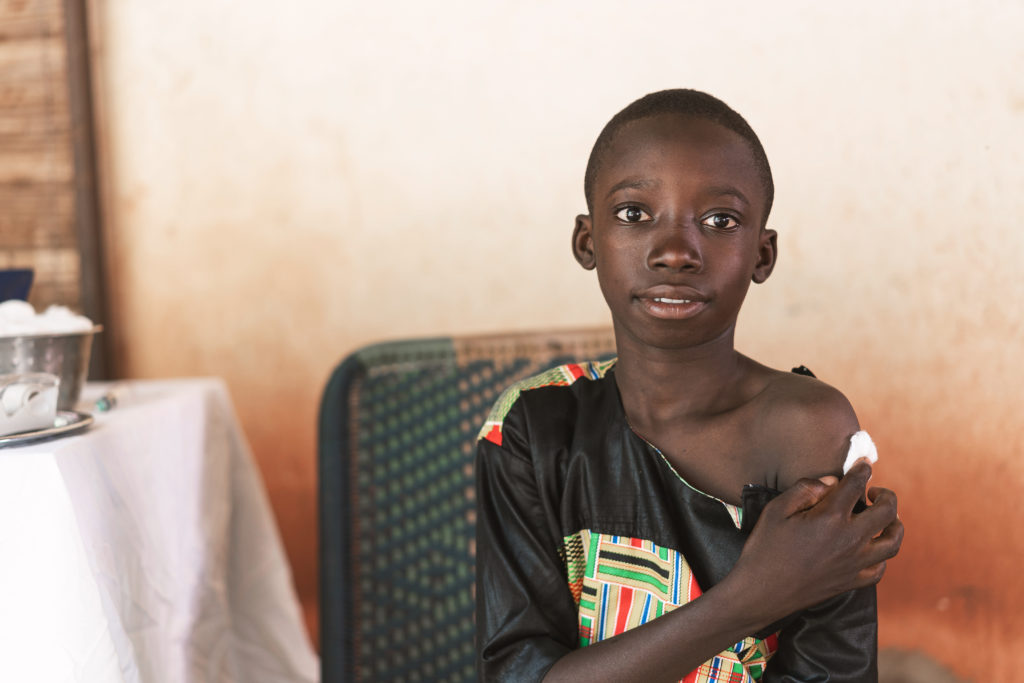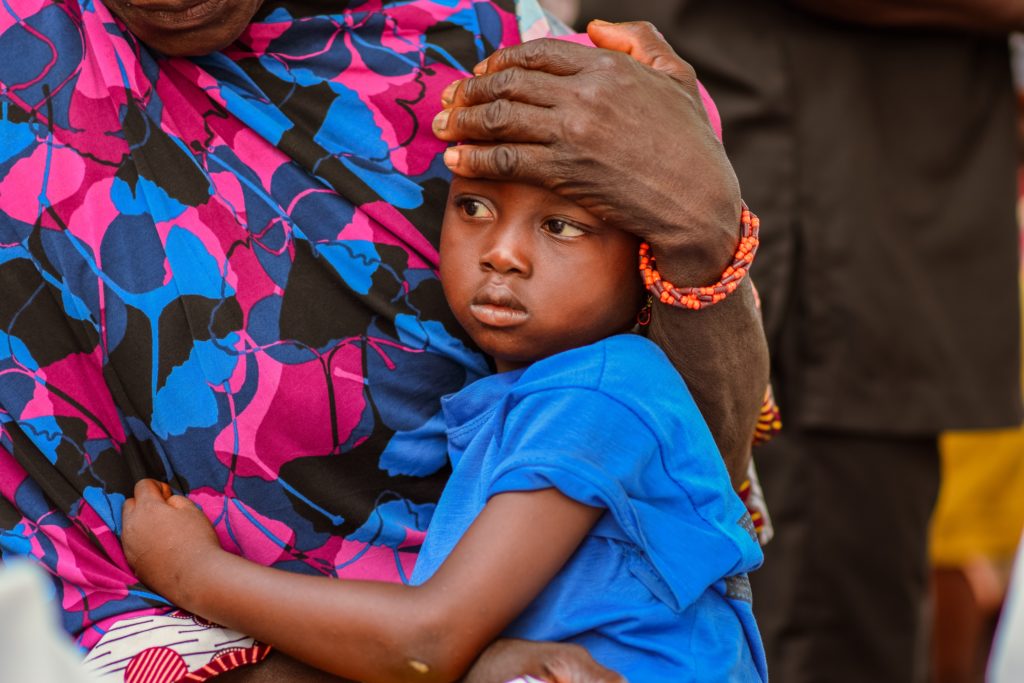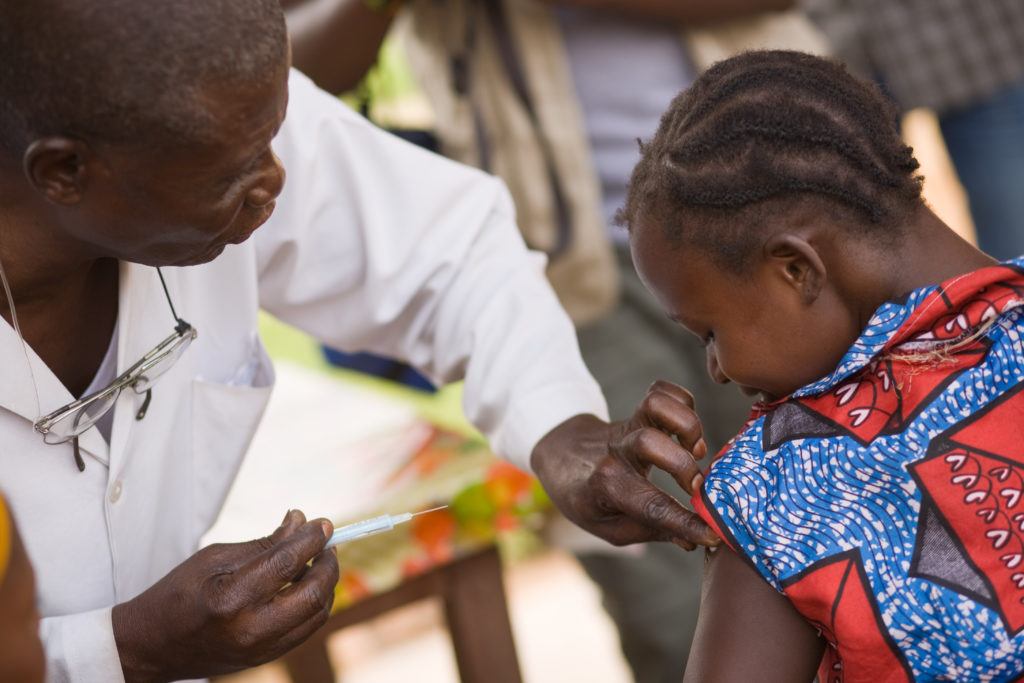The right to health is a fundamental entitlement for every child, as enshrined in the UN Convention on the Rights of the Child (UNCRC), which states that all children are entitled to the highest attainable standard of health. However, many children face significant barriers to healthcare, highlighting the need for policy reforms and resource allocation to uphold these rights.

Health as a fundamental child right
The right to health, as outlined in the UN Convention on the Rights of the Child (UNCRC), affirms every child’s entitlement to the highest attainable standard of health, regardless of nationality, residency, or legal status (Palm, 2017). Article 24 establishes that children are entitled to comprehensive health services, including prevention, treatment, rehabilitation, and palliative care (UN, 2013).
Health vs. healthcare

Health refers to a child’s complete physical, mental, and social well-being, beyond just the absence of illness. It encompasses access to basic needs like nutrition, clean water, education, and safe living environments, enabling children to grow, develop, and thrive. Health is a fundamental right, requiring a holistic approach that addresses not only medical care but also the social and environmental factors influencing well-being (Felman, 2023).
Healthcare services are the formal systems established to deliver medical care, ensuring the fulfillment of children’s right to health. These include preventive measures like immunizations, curative treatments for illnesses, and rehabilitative care. Delivered through public, private, or hybrid systems, healthcare should be accessible, affordable, and equitable, ensuring children receive the care needed to live healthy lives (Journal of Child Obesity, n.d.).
Access to health services
Globally, children face significant barriers within healthcare systems, including funding constraints, difficulties navigating services, and high costs of primary care, hindering improved health outcomes in both developed and developing countries (Wild et al., 2021).
In the United States, limited healthcare access for children often results from a lack of insurance, disproportionately affecting low-income families and ethnic minorities. Black and Hispanic children are more likely to be uninsured and face systemic obstacles, with uninsured children six times more likely to go without medical services (Institute of Medicine and National Research Council et al., 1998).
Conversely, providing free healthcare services significantly enhances children’s quality of life. This is supported by the study titled “Effects of Healthcare Subsidy on Utilization of Healthcare Services and Health Outcomes of Preschool-Aged Children in Japan” which analyzed the impact of a 1990s healthcare subsidy on preschool children in Japan. The findings indicated two significant outcomes:
- The subsidy led to a substantial increase in outpatient care usage, reflected in the number of patients, visit frequency, and overall monthly spending. Inpatient care utilization also rose notably for infants under 12 months.
- There was a marked enhancement in children’s health, evidenced by improved subjective health symptoms reported by parents. Additionally, the mortality rate for infants decreased by 0.79 per 1,000 individuals (Kang et al., 2022).
This study underscores the necessity for governments to implement policies that prioritize the well-being of every child to ensure their health and access to affordable healthcare services (Harvard University, n.d.). To achieve this, governments must allocate funding, establish healthcare frameworks, and conduct outreach to raise awareness of available services.
Maternal and newborn healthcare

The postnatal period refers to the first six to eight weeks after birth, during which the mother and newborn receive specialized healthcare. Postnatal care is a continuation of the care provided throughout pregnancy, labor, and delivery, focusing on the needs and preferences of the woman and her baby. This care aims to establish a supportive environment where families receive professional guidance on caring for their new family member (NHS, n.d.).
Key components of postnatal care include midwifery care, physical and emotional health monitoring, breastfeeding support, and newborn health check-ups. Care planning is based on the individual needs of the mother and baby, ensuring that any necessary follow-up visits or interventions are communicated to relevant healthcare professionals (NHS, n.d.).
Mothers should receive a postnatal examination within 24 hours, proper nutrition, adequate rest, and avoiding strenuous activities. Mothers experiencing excessive postpartum bleeding must have access to immediate medical help. Practicing personal hygiene to prevent infections and discussing breastfeeding challenges are integral for continued care (WHO, 2010).
In addition, access to health services is fundamental for vulnerable populations such as refugee mothers and children. These services must provide maternal and newborn care, contraception, and the prevention and treatment of HIV and other sexually transmitted infections. Timely and high-quality care can save lives and empower displaced individuals to make informed choices about their health and family planning (UNHCR, n.d.).
Maternal and infant mortality
Child mortality, or under-five mortality, refers to the deaths of children under the age of five, typically reported as the number of deaths per 1,000 live births. A subset of this, infant mortality, includes deaths occurring before the age of one. The majority of child deaths occur in the first year, with a sharp decline in mortality risk after that, leveling out by age 10. Historically, child mortality exceeded 200 deaths per 1,000 births, but healthcare improvements have significantly reduced these rates (Winking, 2016).
Infectious diseases, preterm birth complications, and congenital anomalies are the leading causes of death for children under five. However, regional disparities in survival rates are stark. For example, sub-Saharan Africa and southern Asia account for over 80% of under-5 deaths in 2022, with sub-Saharan Africa reporting the highest neonatal mortality rate at 27 deaths per 1,000 live births. A child born there is 11 times more likely to die in the first month of life than a child born in Australia or New Zealand (WHO, n.d.).
Notably, just six countries contribute to half of worldwide child deaths, while 42 countries account for 90%. As previously stated, the main causes of these deaths include pneumonia, diarrhea, and neonatal disorders, with malaria and AIDS also contributing factors. Approximately 99% of neonatal deaths occur in poor countries, which have an estimated neonatal mortality rate of 33 per 1,000 live births, compared to just 4 per 1,000 in 39 high-income countries (Bhutta & Saeed, 2008).
Childhood illnesses
Childhood illness encompasses a range of diseases and conditions that arise due to the significant growth and developmental changes children undergo. The most common childhood illnesses worldwide include a range of infectious diseases, respiratory conditions, and nutritional deficiencies (Meadow et al., n.d.). Based on the Global Burden of Disease Study 2019, the leading illnesses affecting children worldwide are (The Lancet, 2023):
- Enteric infections caused by bacteria, viruses, or parasites that lead to diarrhea and dehydration disproportionately affect children under five in low-income areas. Improved sanitation and access to clean water can significantly reduce fatalities.
- Lower respiratory tract Infections (LRTIs) such as pneumonia and bronchitis remain leading causes of death among young children globally, particularly in regions with limited access to vaccines, antibiotics, oxygen therapy and healthcare in general.
- Malaria is a preventable mosquito-borne illness that heavily impacts children under five in sub-Saharan Africa, causing severe anemia and death. Widespread use of insecticide-treated bed nets and antimalarial drugs has proven effective in reducing cases.
- HIV and AIDS impact adolescents and younger children alike, with mother-to-child transmission remaining a major concern. Antiretroviral therapy (ART) and preventive measures during pregnancy have proven to be successful methods in controlling its spread.
- Tuberculosis is a leading cause of chronic illness and death in older children and adolescents, particularly in regions with high HIV co-infection rates. Timely diagnosis and long-term treatment are considered important to increase the chances of recovery.
- Neonatal sepsis and other neonatal infections are life-threatening infections that occur within the first 28 days of life, often due to unhygienic birthing practices. Therefore, improving maternal care and neonatal intensive care units can drastically reduce mortality.
- Vaccine-preventable diseases like measles still claim lives in areas with low immunization rates and poor public health awareness.
- Meningitis and encephalitis are severe infections of the brain and spinal cord that can cause long-term disability or death, particularly in young children. However, access to vaccination and prompt medical treatment can save lives.
- Tropical diseases like soil-transmitted worms can lead to malnutrition and stunted growth. However, deworming programs and better sanitation can mitigate their impact.
- Infectious skin conditions such as scabies and impetigo cause discomfort and complications, especially in crowded and resource-poor settings. Basic hygiene and access to antibiotics can effectively manage these conditions (The Lancet, 2023).
Immunizations and vaccines
Vaccines are primarily administered during childhood to protect against serious infectious diseases early in life when children are most vulnerable. By stimulating the immune system to recognize and fight specific pathogens, vaccines provide long-lasting immunity, helping prevent outbreaks and ensuring children are safeguarded from diseases that can have severe consequences. This early immunization also contributes to community immunity, reducing the spread of illness (U.S. Department of Health and Human Services, 2024).

However, despite ongoing efforts, 21 million children remain unvaccinated or under-vaccinated in 2023. Vaccination coverage faces particular challenges in fragile states and conflict-affected areas, where factors like limited access and vaccine shortages disrupt health systems. Approximately 11 million unvaccinated or under-vaccinated infants (51%) live in these vulnerable conditions, highlighting the urgent need for targeted support to prevent disease outbreaks (UNICEF, n.d.).
Adolescents and the right to sexual education
“Sexual and reproductive health” refers to an individual’s right to a healthy body, autonomy, education, and access to healthcare for informed sexual decisions. It includes knowledge and resources to prevent sexually transmitted infections and unintended pregnancies. Key rights in the Convention on the Rights of the Child (CRC) explicitly include:
- Right to information (Article 13): Children have the right to seek, receive, and share information, yet cultural, traditional and practices often obstruct access to education on sexual and reproductive health. This limitation makes it difficult for adolescents to protect themselves from unwanted pregnancies and sexually transmitted infections, including HIV/AIDS.
- Right to health facilities (Article 24): Children and young people frequently encounter barriers to accessing sexual and reproductive health services, often being denied care due to their age or marital status. Legal requirements may necessitate parental consent, or in the case of married girls, consent from their husbands.
- Right to the highest attainable standard of health: Accessible healthcare and education are important, as a lack of resources contributes to approximately 330 million new sexually transmitted infections annually, with over half affecting individuals aged 15 to 24. HIV/AIDS accounts for about 6 million new infections each year, including around 2.6 million among those aged 10 to 24 (IWHC, n.d.).
Sexual and reproductive health services
Sexual and reproductive health includes the ability to have a safe sex life, the capability to reproduce, and the freedom to make personal decisions about reproduction. Maintaining this health requires access to accurate information and affordable contraception. Protection from sexually transmitted infections and management of menstruation and fertility are also vital (UNFPA, n.d.).
Services for unplanned pregnancies and chronic condition management are essential for the well-being of mothers and their children, helping ensure safety and better care (The Better Health Channel, n.d.). However, abortion laws remain a global challenge, with restrictive policies affecting 40% of women worldwide and contributing to 39,000 deaths annually from unsafe abortions (Focus 2030, 2024).
In the United States, 13 states, including Texas, have near-total abortion bans. This has been linked to a 56% rise in maternal mortality in Texas since 2021, compared to an 11% national increase (Edwards et al., 2024). Similarly, in Senegal, restrictive abortion laws make safe access nearly impossible, with reforms facing resistance due to cultural beliefs (Gaestel, 2018).
The State of the World’s Midwifery (SoWMy) 2014 report highlights barriers to Sexual, Reproductive, Maternal, Newborn, and Adolescent Health (SRMNAH) services in 73 low- and middle-income countries, such as workforce shortages, out-of-pocket costs, and mistrust toward midwives, which undermine life-saving care (Homer et al., 2018).
Harmful cultural practices such as child marriage and female genital mutilation further highlight the need for targeted interventions to protect children’s health rights. In addition, nurses are essential in identifying these practices and educating families about their harmful effects (Sengul et al., 2023).
Mental health services
Mental health services for children are designed to help support their emotional, social, and psychological well-being. These services aim to assist children in managing and overcoming challenges that may affect their ability to cope with daily life. The goal is to help them maintain or regain control over key aspects of their lives, such as their emotions and behaviors, in a healthy and productive way (Griffiths, 2023).
For children, mental health support includes a variety of treatments that emphasize evidence-based approaches, measurable goals, active involvement of parents, and clear communication regarding treatment plans and outcomes. Examples of care include individual, group, and family therapy, behavioral interventions, crisis management, medication management, and specialized therapies addressing trauma or developmental issues (ACMH, n.d.).

Adolescence is one of the crucial stages of every individual in life during which mental health issues frequently arise. During this time, adolescents confront significant health challenges, including substance abuse and violence, which can result in suicide attempts—one of the leading causes of death among adolescents in developing countries (Zillén, 2023).
According to the WHO Mortality Database, the largest and sole source for global suicide mortality analysis, most European countries experienced declining suicide trends between 1990 and 2020, although some exceptions were noted. Notably, the United Kingdom saw a concerning annual increase of 2.5% in suicide rates. In addition, similar upward trends in suicide rates have been observed outside Europe, particularly in the United States, South America, Japan, and other regions in Asia (Bertuccio et al., 2024).
The connection between suicide and mental disorders—particularly depression and alcohol use disorders, as well as a history of previous suicide attempts, is well-documented in high-income countries. However, many suicides occur impulsively during moments of crisis, when individuals may struggle to cope with life stresses such as financial difficulties, relationship conflicts, or chronic pain and illness (WHO, 2024).
Written by Lidija Misic
Internally proofread by Aditi Partha
Last edited on November 17, 2024
Bibliography:
ACMH (n.d.), Types of treatment. Retrieved from ACMH at https://www.acmh-mi.org/get-information/childrens-mental-health-101/treatments-supports/#:~:text=Children%20with%20serious%20emotional%20disturbances,long%2Dterm%20than%20inpatient%20hospitalization., accessed on November 17, 2024.
Bertuccio Paola et al. (2024), Global trends in youth suicide from 1990 to 2020: an analysis of data from the WHO mortality database. Retrieved from The Lancet at https://www.thelancet.com/journals/eclinm/article/PIIS2589-5370(24)00085-3/fulltext, accessed on October 30, 2024.
Bhutta Zulfiqar & Saeed Arif Muhammad (2008), Childhood Infectious Diseases: Overview. Retrieved from National Library of Medicine at https://pmc.ncbi.nlm.nih.gov/articles/PMC7148616/, accessed on October 20, 2024.
Edwards Erika et al. (2024), A dramatic rise in pregnant women dying in Texas after abortion ban.Retrieved from NBC at https://www.nbcnews.com/health/womens-health/texas-abortion-ban-deaths-pregnant-women-sb8-analysis-rcna171631, accessed on October 31, 2024.
Felman Adam (2023), What is good health? Retrieved from MedicalNewsToday at https://www.medicalnewstoday.com/articles/150999, accessed on November 17, 2024.
Focus 2030 (2024), Where do abortion rights stand in the world in 2024? Retrieved from Focus 2030 at https://focus2030.org/Where-do-abortion-rights-stand-in-the-world-in-2024#:~:text=The%20vast%20majority%20of%20countries,strictly%20prohibited%20in%2022%20countries., accessed on October 31, 2024.
Gaestel Allyn (2018), Why Infanticide Is A Problem In Senegal. Retrieved from NPR at https://www.npr.org/sections/goatsandsoda/2018/10/03/631892291/why-infanticide-is-a-problem-in-senegal, accessed on 31 October, 2024.
Griffiths Robert (2023), Mental health services. Retrieved from ScienceDirect at https://www.sciencedirect.com/topics/psychology/mental-health-service#:~:text=Mental%20health%20services%20are%20%E2%80%9Cany,group%20contexts%E2%80%9D%20%5B10%5D., accessed on November 17, 2024.
Harvard University (n.d.), Lifelong Health. Retrieved from Center on the Developing Child at https://developingchild.harvard.edu/science/deep-dives/lifelong-health/, accessed on October 20, 2024.
Homer Caroline et al. (2018), Barriers to and strategies for addressing the availability, accessibility, acceptability and quality of the sexual, reproductive, maternal, newborn and adolescent health workforce: addressing the post-2015 agenda. Retrieved from National Library of Medicine at https://pmc.ncbi.nlm.nih.gov/articles/PMC5819639/, accessed on October 20, 2024.
Journal of Child Obesity (n.d.), Child Health Care. Retrieved from Prime Scholars at https://www.primescholars.com/scholarly/child-health-care-journals-articles-ppts-list-4742.html#:~:text=Child%20Health%20care%20is%20defined,experienced%20in%20treating%20pediatric%20patients., accessed on November 17, 2024.
IWHC (n.d.), The Human Rights of Children and their Sexual and Reproductive Health. Retrieved from Center for Reproductive Rights at https://reproductiverights.org/the-human-rights-of-children-and-their-sexual-and-reproductive-health/, accessed on October 30, 2024.
Lodhi Areesha (2024), Polio returns to Gaza: Where else has the virus re-emerged? Retrieved from Al Jazeera at https://www.aljazeera.com/news/2024/9/2/polio-returns-to-gaza-where-else-has-the-virus-re-emerged, accessed on October 20, 2024.
Meadow et al. (n.d.), Childhood disease and disorder. Retrieved from Britannica at https://www.britannica.com/science/childhood-diseases-and-disorders, accessed on November 27, 2024.
NHS (n.d.), Principles of postnatal care. Retrieved from UCLH at https://www.uclh.nhs.uk/our-services/find-service/womens-health-1/maternity-services/postnatal-care, accessed on November 17, 2024.
Kang Cheolmin et al. (2022), Does free healthcare improve children’s healthcare use and outcomes? Evidence from Japan’s healthcare subsidy for young children. Retrieved from ScienceDirect at https://www.sciencedirect.com/science/article/abs/pii/S016726812200292X, accessed on October 30, 2024.
Knell Yolande (2024), Gaza polio vaccine rollout starts well, UN says. Retrieved from BBC at https://www.bbc.com/news/articles/c4gl62rvvp8o, accessed on October 20, 2024.
Palm Willy (2017), Children’s universal right to health care in the EU: Compliance with the UNCRC. Retrieved from Eurohealth OBSERVER at https://iris.who.int/bitstream/handle/10665/332611/Eurohealth-23-4-3-6-eng.pdf, accessed on October 20, 2024.
Sengul Kisecik Zeynep et al. (2023), Intergenerational exploration of traditional practices affecting child health: A phenomenological study. Retrieved from ScienceDirect at https://www.sciencedirect.com/science/article/abs/pii/S0882596323002932, accessed on October 20, 2024.
Stanford Medicine (n.d.), AIDS/HIV in Children. Retrieved from Standford Medicine at https://www.stanfordchildrens.org/en/topic/default?id=aidshiv-in-children-90-P02509, accessed on November 10, 2024.
The Better Health Channel (n.d.), Women’s sexual and reproductive health. Retrieved from The Better Health Channel at https://www.betterhealth.vic.gov.au/campaigns/womens-sexual-and-reproductive-health, accessed on November 17, 2024.
The Lancet (2023), The unfinished agenda of communicable diseases among children and adolescents before the COVID-19 pandemic, 1990–2019: a systematic analysis of the Global Burden of Disease Study 2019. Retrieved from The Lancet at https://www.thelancet.com/journals/lancet/article/PIIS0140-6736(23)00860-7/fulltext, accessed on November 27, 2024.
UNAIDS (2001), Children and young people in a world of AIDS. Retrieved from UNAIDS at https://www.unaids.org/en/resources/documents/2001/20010927_jc656-child_aids_en.pdf, accessed on November 10, 2024.
UNFPA (2024), The European Union and UNFPA join forces to strengthen women’s health in Afghanistan. Retrieved from UNFPA at https://www.unfpa.org/updates/european-union-and-unfpa-join-forces-strengthen-womens-health-afghanistan, accessed on October 30, 2024.
UNFPA (n.d.), Sexual & reproductive health. Retrieved from UNFPA at https://www.unfpa.org/sexual-reproductive-health, accessed on November 17, 2024.
UNHCR (n.d.), Sexual and reproductive health. Retrieved from UNHCR at https://www.unhcr.org/what-we-do/protect-human-rights/public-health/sexual-and-reproductive-health, accessed on October 30, 2024.
UNICEF (n.d.), Immunization. Retrieved from UNICEF at https://data.unicef.org/topic/child-health/immunization/, accessed on October 20, 2024.
UNICEF (n.d.), Maternal mortality. Retrieved from UNICEF at https://data.unicef.org/topic/maternal-health/maternal-mortality/, accessed on October 30, 2024.
United Nations (2013), General comment No. 15 (2013) on the right of the child to the enjoyment of the highest attainable standard of health (art. 24)*. Retrieved from UN at https://docstore.ohchr.org/SelfServices/FilesHandler.ashx?enc=6QkG1d%2FPPRiCAqhKb7yhsqIkirKQZLK2M58RF%2F5F0vHCIs1B9k1r3x0aA7FYrehlNUfw4dHmlOxmFtmhaiMOkH80ywS3uq6Q3bqZ3A3yQ0%2B4u6214CSatnrBlZT8nZmj, accessed on October 31, 2024.
U.S. Department of Health and Human Services (2024), Immunization. Retrieved from U.S. Department of Health and Human Services at https://www.hhs.gov/immunization/basics/work/prevention/index.html, accessed on November 17, 2024.
WHO (n.d.), Child mortality and causes of death. Retrieved from World Health Organization at https://www.who.int/data/gho/data/themes/topics/topic-details/GHO/child-mortality-and-causes-of-death, accessed on October 20, 2024.
WHO (2010), Counselling for Maternal and Newborn Health Care: A Handbook for Building Skills. Retrieved from National Library of Medicine at https://www.ncbi.nlm.nih.gov/books/NBK304191/, accessed on October 31, 2024.
WHO (2024), Suicide. Retrieved from World Health Organization at https://www.who.int/news-room/fact-sheets/detail/suicide, accessed on October 30, 2024.
Weinberg A. Geoffrey (2023), Human Immunodeficiency Virus (HIV) Infection in Children and Adolescents. Retrieved from The MSD Manual at https://www.msdmanuals.com/home/children-s-health-issues/human-immunodeficiency-virus-hiv-infection-in-children/human-immunodeficiency-virus-hiv-infection-in-children-and-adolescents, accessed on November 10, 2024.
Winking Jeffrey (2016), Child Mortality. Retrieved from Springer Nature at https://link.springer.com/referenceworkentry/10.1007/978-3-319-16999-6_102-1#:~:text=Introduction-,Child%20mortality%2C%20also%20known%20as%20under%2D5%20mortality%2C%20refers,to%201%20year%20of%20age., accessed on November 27, 2024.
Zillén Kavot (2023), Chapter 5 Children’s Right to Health(Care) – in Light of Medical Advancements and Developments in Paediatric Care. Retrieved from Brill Academic Publishers at https://brill.com/edcollchap-oa/book/9789004511163/BP000013.xml?language=en&body=fullhtml-60832, accessed on October 20, 2024.

